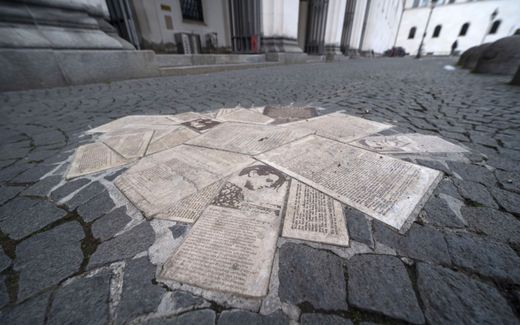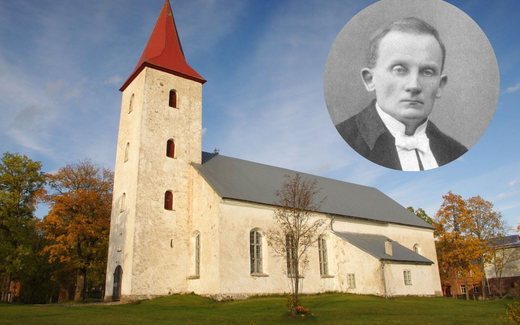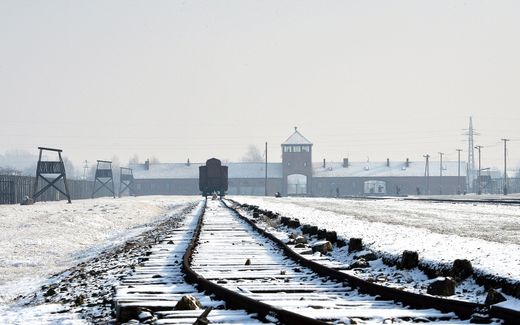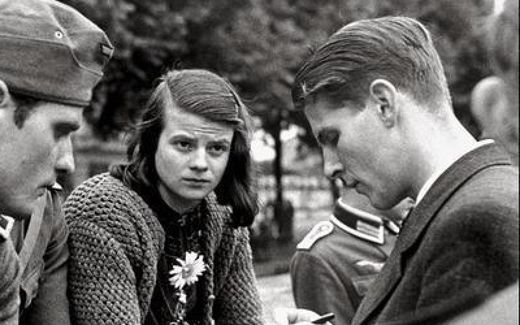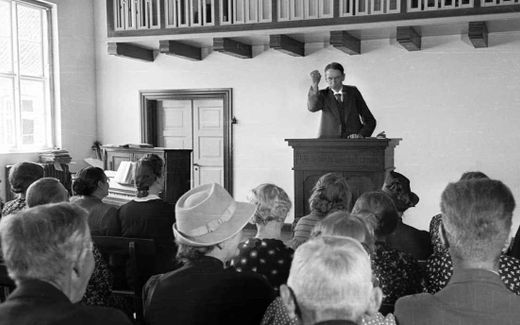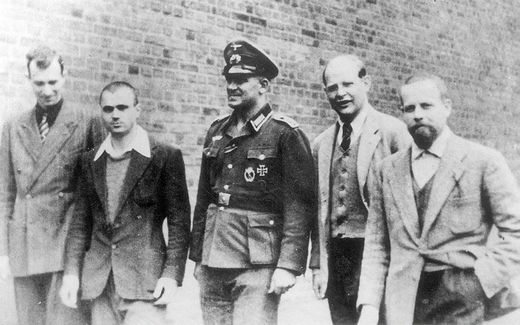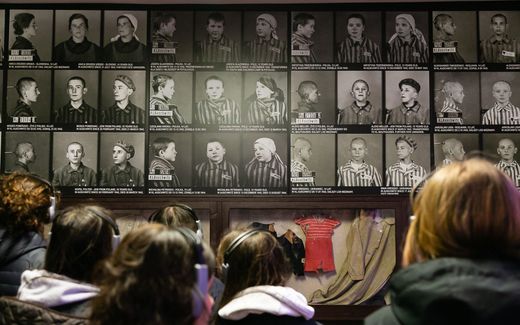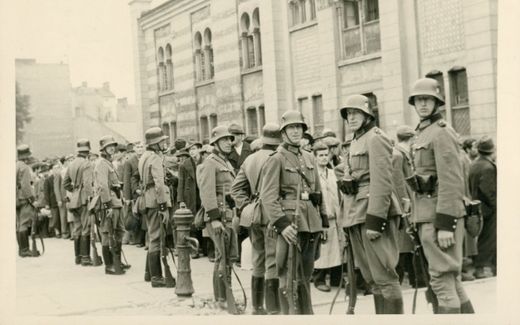Hans Asmussen, Lutheran pastor in Nazi Germany
21-08-2023
Central Europe
A.B. Goedhart, RD
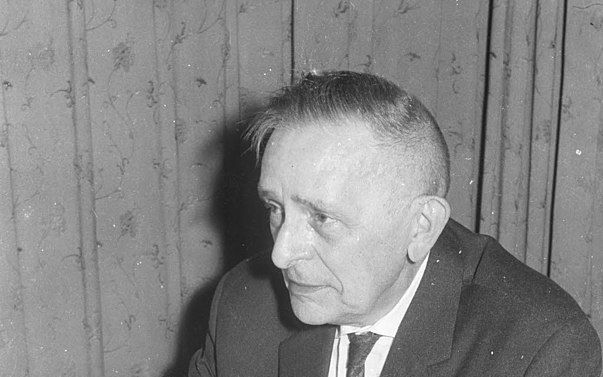
Pastor Hans Asmussen resisted the National Socialist doctrine during the Second World War. Photo Wikimedia Commons
Central Europe
A startling event in the summer of 1939 highlighted the harshness of the National Socialists in Germany against the church. This time, the reason was a meditation by Hans Asmussen.
On 18 July 1939, Paul Schneider, "the pastor of Buchenwald", was brutally murdered. Shortly afterwards, on 2 August, there was a conference of the Reich Brethren Council of the conservative Bekennende Kirche. Here, Hans Asmussen meditated on Acts 6:9-15 (about deacon Stephen) in connection with Schneider's death. The Gestapo received information about this meeting, and as a result, Asmussen was also briefly imprisoned. Who was he?
On 21 August 1898, 125 years ago this month, Hans Christian Asmussen was born in the German town of Flensburg in Schleswig-Holstein, close to the Danish border. Hans was the youngest of seven children of married couple George and Elise Asmussen-Koch. His father was the principal of a primary school. He sought Christian teachers who wanted to help him wholeheartedly, He also published a Christian periodical in which pedagogical ideas were placed to further educate his team. The Asmussen family was characterised by Biblical values and standards. Wholeheartedly they wanted to follow the Lord. A Pietist grandfather of Hans was a man of prayer. When he walked among his sown fields, he would kneel to ask for God's blessing.
Spiritual influence
Flensburg was home to a deaconess institution. This institute of mercy had great spiritual influence in the city. It was led by the charismatic preacher E. Wacker, an Orthodox Lutheran revivalist preacher who opposed liberal theology in the land church. A cordial friendship and cooperation developed between Father Asmussen and this preacher.
Asmussen's school also prepared students to be admitted to grammar school. In 1908, Hans started as a grammar school student in his hometown. In the spring of 1917, this intelligent and diligent student received his grammar school diploma, which also included the subjects Greek and Hebrew.
During Hans' school days, two drastic events occurred. In September 1914, his father died of cancer at the age of 53. His eldest brother Eduard died on the battlefield in France the same month. Eduard was an educational role model for Hans. But despite his interest in theology and the death of his brother, Hans still decided to join the army. In April 1917, he enthusiastically enlisted to defend his homeland. Patriotism and national-conservative politics were highly regarded in his family, although his father doubted the Kaiser's political gifts.
Hans spent most of his service in Flanders. There, his enthusiasm and idealism were snapped. He wrote to his mother: "Death has a rich harvest here, and our national pride is humiliated." After the end of World War I, Hans came home safely. However, he had become somewhat asthmatic during the war years. From this, he would suffer throughout his life.
Lutheran Brotherhood
In 1919, Asmussen began his theological studies in the German city of Kiel and immediately founded a circle of like-minded people, the Lutheran Brotherhood. Their aim was to combat the prevailing liberal theology. When the group temporarily moved to Tübingen in 1920, it was soon known there as "the arch-conservatives from Flensburg".
After graduating in Kiel in 1921, Asmussen was able to do his vicariate at the deaconess institution in his hometown. Here he was appointed assistant preacher in 1925. About his work, he wrote: "In the pastoral care of the sick and dying, I find a practical counterpoint to academic theology. It is an inestimable privilege when a pastor has to stand by many deathbeds. For there, a lot of theological nonsense disappears, and one learns to pray sincerely in distress."
Vacancy
On Sunday, 25 October 1925, Asmussen had to preach a trial sermon in the farming village of Albersdorf. This congregation had a vacancy that needed to be filled. A day earlier, Asmussen arrived here by train. He had been told that many Christians lived in town. But when he stayed at an inn, he saw dozens of card players. Asmussen felt this was a sin that should not be committed. And his contact with the other preacher was also difficult, as he was, at heart, a liberal theologian. The next morning, Asmussen preached under great strain in a packed church. But the Lord helped. Then it was his competitor's turn. Then it was waiting for the result of the vote by some church leaders. To his surprise, Asmussen was elected after all.
A year later, he married Elsbeth Pickersgill, who came from a Pietist background. The couple had three children.
Street fight
It was the time of the Weimar Republic. Asmussen disagreed with the regime, saying it was the fruit of the French Revolution. League of Nations, pacifism and communism came from the same wrong source. Due to the government's sharp policy, large peasant demonstrations broke out, which were favourable to the growth of National Socialist thought. In March 1929, a huge street fight broke out between communists and their opponents, the Nazis, killing an SA man. The funeral became a major political demonstration attended by thousands of people, including many SA men.
A ministerial brother of Asmussen conducted the funeral. He tried to act in such a way that emotions would calm down. After this, Hitler delivered a eulogy. He compared the fallen SA fighter to the Christian martyrs of the Early Church and called for revenge. He ended like this: "Every doctrine of salvation requires sacrifice. God will not curse our work, but bless it." A confrontation between the funeral procession and the police was barely avoided. A letter written by Asmussen to Hitler personally, protesting against politicising the funeral ceremony, went unanswered.
Altoner Bloody Sunday
Spring of 1932, Asmussen became a pastor in Altona, in the Hamburg region. Here his eyes were opened to the pagan and aggressive ideology of National Socialism. As Asmussen preached on the fifth commandment in the afternoon service on Sunday, 17 July 1932, rifle bullets ricocheted against the church wall. There were 7,000 SA men demonstrating in a communist quarter. They were also fired upon from rooftops by their opponents. Seventeen people were killed and 60 injured in several street fights. This Sunday was nicknamed "Altoner Bloody Sunday".
Altona pastors met for the first time on 1 August to discuss the church's attitude in this new state of affairs. Indeed, a day earlier, the Nazi party had become the largest political party in the country with a huge victory. A majority of the Altoner pastors endorsed the Altoner testimony, which was read on 11 January 1933 in a packed church. The main contribution to this testimony had been made by Asmussen. In this testimony, we read: "Neither state nor any philosophy of life may restrict the free proclamation of God's Word. The doctrine of original sin is fully Biblical. Only Jesus Christ can redeem us."
Forced emeritus status
In 1933, at the request of the local Nazi leader, Asmussen was suspended by the church leadership in Kiel. A year later, he was given forced emeritus status. In this same year, Asmussen had a major part in the creation of the Barmer Thesen: "We reject the false teaching that there are sources of revelation besides God's Word. Jesus Christ is the one Word of God." During the meetings in Barmen, Asmussen had contact with Dietrich Bonhoeffer.
In 1936, the Asmussen family moved to Berlin because he had been appointed leader of the illegal theological college that trained students for the Bekennende Kirche. In 1941, the school had to close by order of the Gestapo.
A memorandum was also written in the year 1936, also involving Asmussen: "To the Führer". In it, the moral decay in society and church disorder were denounced. It was a fearless testimony to all and sundry (authorities) in church and society (politics) to proclaim God's Word and Law. It emphatically warned against the de-Christianisation of society.
Reprisals and arrests followed time and again during this Berlin period: from 1936 to 1940, Asmussen was banned from speaking throughout the German Reich. In 1941, he was imprisoned for eight months in Berlin's notorious Moabit prison. The latter happened after he had buried Martin Niemöller's father. Martin, a theologian and resistance fighter, was still imprisoned in the Dachau concentration camp.
Probst
Since 1942, Asmussen had gained contact with the political resistance against Hitler led by Leipzig mayor Goerdeler and with Dutchman W.A. Visser 't Hooft, secretary-general of the ecumenical movement. In 1943, he worked incognito as secretary to the management of an arms factory in Bremen. His home in Berlin had been bombed.
Under a pseudonym, he could now travel unhindered throughout the country, maintaining contacts with the Bekennende Kirche. Still, in 1943, Bishop Wurm brought him to Württemberg as a preacher and associate. After the end of the war, Asmussen made an important contribution to the "Stuttgarter Schuldverklaring" of October 1945, which was also signed by Martin Niemöller. From Asmussen came the famous sentence: "We indict ourselves because we have not confessed more courageously, prayed more faithfully, believed more joyfully and loved more ardently."
After serving as "Probst" of Kiel from 1949 to 1955, Asmussen retired to Heidelberg. In his last years of life, he devoted himself to broad ecumenism. On 30 December 1968, he died in a nursing home and was buried in the cemetery in Kiel.
This article was translated by CNE.news and published by the Dutch daily Reformatorisch Dagblad on August 17, 2023
Related Articles

